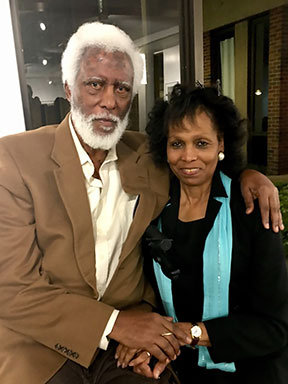Medical Trailblazers in Hampton Roads
JOHN D. HOPKINS, MD
Radiology

Whenever Dr. John Hopkins learns of a new Black specialist practicing in Virginia, he feels a deep sense of satisfaction.
Dr. Hopkins became the state’s second Board certified Black radiologist upon his 1975 arrival in Hampton Roads. Over the next 32 years, he helped add important diagnostic tools, recruit more Black specialists and provide high quality care to patients despite continued segregation.
“I became part of a change effect, which was difficult yet tremendously rewarding,” he says. “Seeing our efforts continue on in younger doctors is a great joy.”
Now 89, Dr. Hopkins has led a remarkable life that began in Trenton, N.J., where his father was a teacher and his mother a nurse for a general practitioner. That GP, who had no children, became Dr. Hopkins’ first professional mentor.
After majoring in Biology and minoring in Chemistry at Lincoln University in Pennsylvania, Dr. Hopkins enrolled at Meharry Medical College in Nashville, Tenn. On his flight to Tennessee – his first time on a plane – he sat beside a man who turned out to be Meharry’s president.
“Quite a good start for me,” Dr. Hopkins notes. “He escorted me to school and got me settled.”
After graduation, Dr. Hopkins completed a rotating internship at Meharry Medical Center and a Radiology residency at Ohio State University. He returned to Meharry as an Assistant Professor of Radiology, splitting time between teaching and seeing patients.
In 1968, Dr. Hopkins was drafted into the Army during the Vietnam War. He spent a year at a hospital in Da Nang, where physicians cared for both American soldiers and local Vietnamese. He later served as Chief of Radiology at William Beaumont Army Medical Center in Texas.
Once he returned to civilian life, Dr. Hopkins completed a year-long fellowship in Nuclear Medicine at Vanderbilt University Medical Center. He then returned to Meharry and opened its first Nuclear Medicine Department.
In 1975, a friend invited Dr. Hopkins to Norfolk Community Hospital, which had opened in 1915 as the city’s first Black-owned hospital. Black patients at Norfolk General Hospital were still confined to isolated basement wards, while a shortage of residency-trained, Board certified specialists left Black GPs shouldering too many responsibilities.
As Chairman of Norfolk Community’s Radiology department by 1980, Dr. Hopkins helped modernize its services to better care for patients – such as developing CT and ultrasound departments – and trained Black residents to carry on that work. “Our whole team was simply determined to create an excellent hospital,” he relates.
Eventually, greater racial integration and rapid hospital and practice consolidations forced Norfolk Community to close its doors in 1998 amidst mounting financial pressures and a dwindling number of patients.
Dr. Hopkins continued in private practice until 2007. He held numerous leadership posts, including President of the Medical Society of Virginia and the Greater Norfolk Medical Society of South Hampton Roads. He is a member of the medical honor society Alpha Omega Alpha and was the first Black physician on the Board of Visitors at Eastern Virginia Medical School.
Today, Dr. Hopkins is a father of three, grandfather of three and great-grandfather of three more; his Nurse Practitioner wife of 51 years, Lillian, died in 2008. He recently suffered a pulmonary embolism but feels fairly healthy.
“I want to live to be 101,” he says. “At least.”

